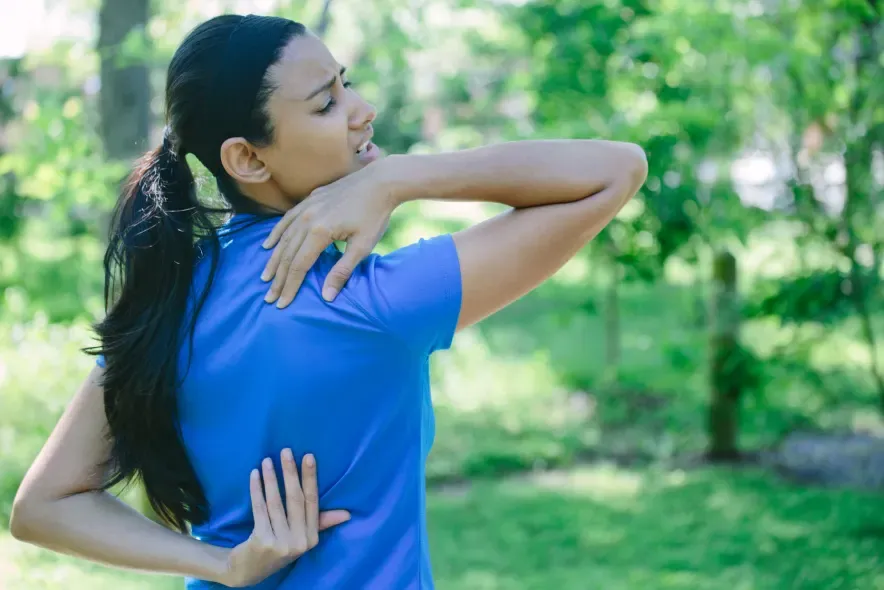Upper Back Pain - Causes and Treatments

The upper back is composed of the thoracic spine, a bony structure surrounding the spinal cord and nerves. This part of the body also includes the shoulder blades and the back of the rib cage. In between the bony structures are spongy discs that provide flexibility and range of motion. In addition, muscles, tendons, and ligaments provide additional support. When these structures become irritated, you may experience pain or discomfort.
Symptoms
Upper back pain is a common problem that affects the back and neck. Its symptoms can range from pain to weakness and limit one's daily activities. The cause of this problem can range from improper posture to a previous injury. Other common causes include a sedentary lifestyle and exposure to stress.
Upper back pain can be either acute or chronic. It may last from a few days to three months. The pain is often dull, throbbing, or sharp, ranging from a single spot to a large area. It may also be caused by muscle irritation or joint dysfunction.
Causes
Common causes of upper back pain include spinal discs that become degenerated or bulge. Puts pressure on the spinal nerves and can lead to pain, stiffness, or even numbness. Another possible cause of upper back pain is osteoarthritis, a disease in which the cartilage in your joints breaks down. This condition can also cause pain in the muscles and trigger points in the back.
A doctor can perform imaging tests to diagnose the problem. This may involve X-rays or a magnetic resonance imaging scan. These tests can help diagnose the underlying cause of pain and rule out other causes. A doctor may prescribe therapy, antidepressants, or even surgery if the pain persists. Chronic pain can lead to stress, which in turn can cause the pain to worsen. If pain persists for over two weeks, surgery may be necessary.
Treatment
The first step in treating upper back pain is finding the problem's source. The pain can be caused by excessive mobility or extreme muscle and joint stiffness. A chiropractor can use chiropractic manipulation to restore balance to the spine. Other treatments may include massage and heat therapy. Steroid injections are also an option to reduce inflammation.
Symptoms of upper back pain can range from sharp pains in one area to general aches. Non-specific back pain can be more debilitating and interfere with daily activities. You may need to consult a physiotherapist or visit a doctor if the pain is severe.
Self-care
Upper back pain is a common ailment caused by several factors. Among these are lifestyle and habits, heavy lifting, and hereditary health conditions. However, several self-care techniques can help reduce or eliminate the pain. For example, stretching your body muscles can help you improve your posture and prevent further pain.
You should seek medical attention if you experience severe pain in your upper back. However, upper back pain may indicate a more serious underlying condition. Symptoms may include radiating pain, pins and needles, tingling in the chest, and fever or chills. There may also be problems with walking or coordination. A severe headache may also accompany the pain.



